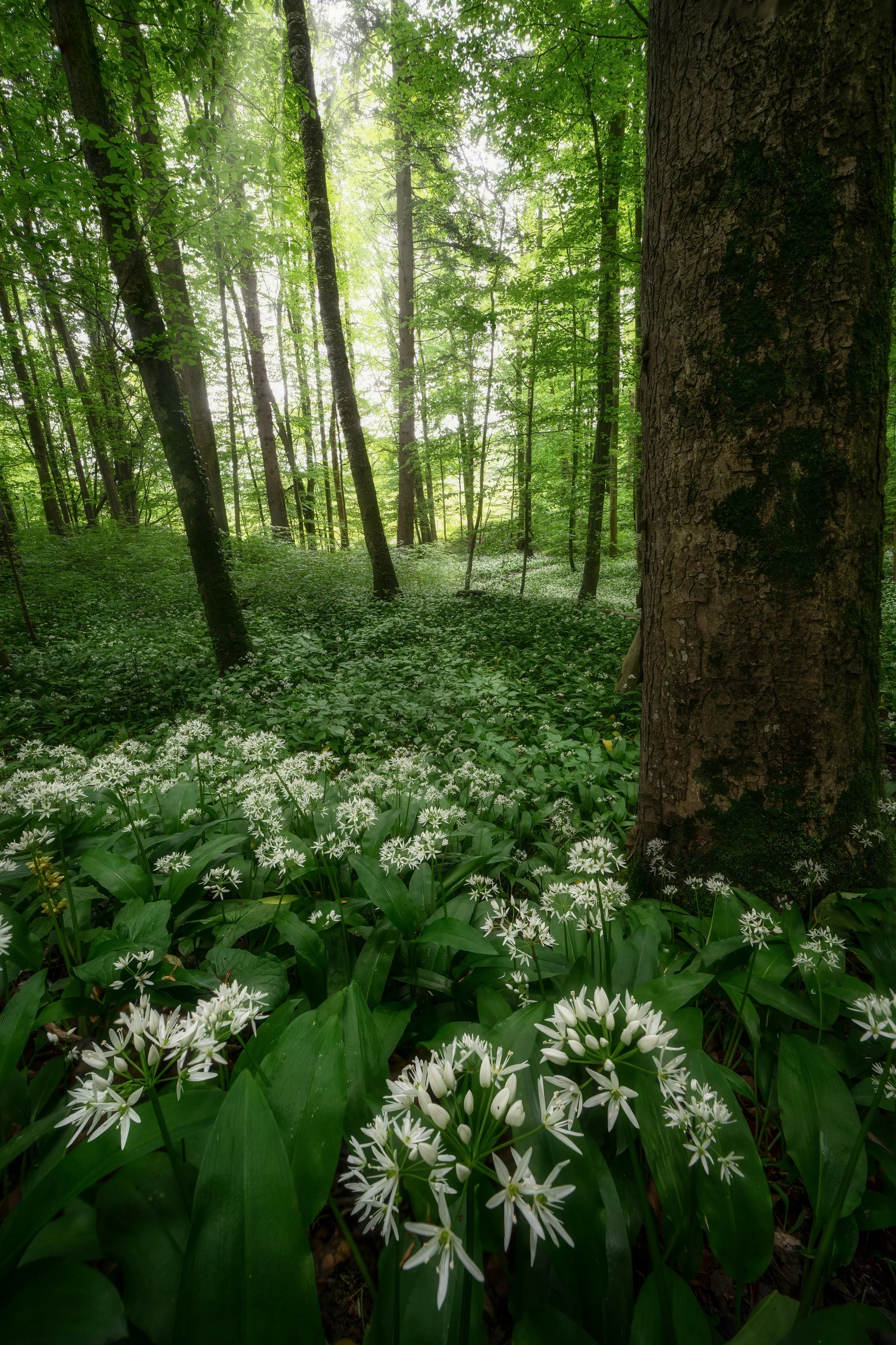Wild Spring Herbs
While our hurried lives often pull us away from spring’s precious gifts, a walk in nature on a bright Sunday morning to discover its riches feels like a joyful reprieve.
I recently visited a shady forest in the Euganean Hills in northern Italy, in the Padovan-Venetian plain; a short drive south of my home in Padua. Revelling in its majesty and fresh air, I realized I was surrounded by far more than simple grass and trees. I was welcomed by a rich, fascinating and harmonious landscape, where a hundred species of insects, flowers, plants and wild herbs commune through some mysterious natural and delicate balance.
When I reached a damp part of the forest, I was amazed to find a stretch of broad, green leaves, with the blowing wind imbuing the area with a garlicky fragrance. This wild herb is known in Italian as aglio orsino (Allium ursinum), and in English by similar names, such as bear leek, bear’s garlic, or most typically as ramson. The scientific and common names almost certainly derive from the bear’s voracious appetite for the herb following hibernation. Bears gorge on it instinctively to purify their bodies after a long winter.
Continues below.
A bulbous plant, it produces bright, lanceolate leaves and white star-shaped flowers. Ramsons are most common to Europe and Asia. The North American variety is known as ramps (Allium tricoccum)—not to be confused with the closely resembling colchicum (Colchicum autumnale) or lily of the valley (Convallaria majalis), both of which are toxic. The shape and colour of the flowers, together with the leaves’ garlic fragrance, help to identify the right herb.
Recognizing and foraging for wild herbs is an ancient know-how dating back to prehistoric times. Its original purpose was to reap the medicinal and nutritional properties of the herbs collected. This knowledge faded into the background once agriculture became firmly implanted, only to be rediscovered later during periods of famine. Today, foraging is a charming activity admired by lovers of nature and tradition. Only rule: don’t pretend to be an expert. You must be confident in your ability to discern edible herbs from poisonous ones, or be accompanied by an expert.
Continues below.
Photo by Ilaria Berlose
With a basketful of ramsons, I headed back home to cook a spring-flavoured meal. Not as pungent as regular garlic, ramsons can be used in a plethora of ways. You can add whole leaves to a good plate of pasta, or turn them into a pesto by mincing the leaves with walnuts or pine nuts, extra virgin olive oil and salt using a mortar and pestle. Add a single teaspoon to your fusilli or other pasta to infuse a woody spring fragrance,
Ingredients for ramson pesto
100 g ramson leaves
100 g walnuts
120 mL extra virgin olive oil
salt
Photo by Ilaria Berlose
TEXT AND RECIPE BY ILARIA BERLOSE



